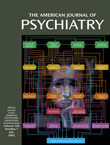This book takes us on a rapid world tour with brief stops in Australia, Austria, China, Great Britain, India, Italy, Japan, the Netherlands, Spain, Sweden, a number of other European countries, and the United States. The major emphasis is on individuals suffering from schizophrenia. The basic assumption is that the best treatment for schizophrenia is the appropriate use of medication plus family-focused stress reduction interventions. A valiant effort is made to collect studies to provide a scientific basis for this assumption. The goal is to develop “evidence-based” interventions. Methodological problems are formidable. To cite a major one, it has so far been impossible to devise a double-blind study to evaluate this social intervention in a manner universally used in studying pharmacological treatments. Further, as the chapter authors well demonstrate, interventions must be culturally based, which makes comparable studies almost impossible. Nevertheless, I am reasonably satisfied that the case has been made. So we move on to implementation.
The multitude of authors (I count 34) make many relevant cultural points. For instance, in Anglo-American families criticism seems to be a key factor in predicting relapse. For Mexican Americans lack of family warmth is the villain. In Guangzhou, China, treatment is very much psychopharmacologically oriented; all other services to patients are provided “on their own” (the title of the chapter) by families, and the roles of parents and spouses are spelled out in some detail. (The authors of the chapter on families in Guangzhou point out that in a country as vast and diverse as China it is impossible to write about the country as a whole.) In Australia we find a well-developed national mental health strategy. Positive outcomes are dependent on well-trained staff. Services should encourage consumer participation. Which is “better”: the Chinese approach or the Australian approach? Each is so dependent on economic, cultural, political, and historical factors as to make comparison fascinating but fruitless.
In Japan, it is noteworthy that there is essentially no community-based treatment for schizophrenia. The average length of stays for psychiatric patients in different countries are startling: 7.3 days in France, 8.9 days in the United States, 38.1 days in Germany, 330.7 days in Japan. There are 2.9 psychiatric beds for every 1,000 people in Japan, compared with 0.6 for every 1,000 people in the United States.
This brief book also discusses financing, training, and other obstacles to implementation of what is a firmly held conviction that family participation is the key element in successful management of schizophrenia. The book is an appetizer. If you want to move on to the main course, ample further readings are provided in detailed bibliographies appended to the individual chapters.

